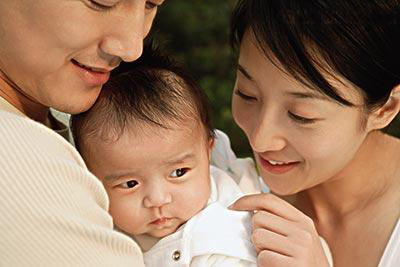Malaysia Expects to Triple the Numbers of Chinese Medical Travellers in the next 2 years
Mrs W* (not her name to protect privacy) a Chinese national whose son, an only child, died in a road accident in July 2015.
W and her husband tried to conceive through in-vitro fertilisation (IVF), but without any success. They did some research online and contacted a Malaysian IVF clinic and after the procedure, W became pregnant with a baby boy in June. W and her husband are just one of the 90 million couples in China who is looking to have a second child. And around 40 million of these women who are older than 40 would consider fertility treatment. That means big business for IVF centres in Malaysia.
The country has many advantages. To start off, Malaysia has a very high IVF success rate, which is said to be the highest in the world.
“One thing about Malaysia that we are proud of is that the IVF success rate is among the highest in the world,” said the CEO of Malaysia Healthcare Travel Council, Sherene Azli in a recent report by The South China Morning Post.

“The world’s average success rate is 50 per cent, but Malaysia’s success rate is about 65 per cent on average.”
Language and cost are two other important factors that attract Chinese couples to Malaysia. Many medical staff members in Malaysia speak fluent Mandarin, Cantonese or Hokkien, while one cycle of IVF treatment in Malaysia costs about US$5,000, which is much more affordable than other countries.
A similar operation in mainland cities costs about 40,000 yuan, and in the US it is the equivalent of at least 150,000 yuan, added Sherene in her interview with SCMP.
Most of the IVF centres in Malaysia are also equipped with cutting-edge technology and have been recognized globally as state-of-the-art IVF centres:
- TMC Fertility or known as Thomson Hospital now won the International Medical Travel Journal award for Best Fertility Clinic of the Year from 2016 to 2018
- TMC Fertility Centre and Mahkota Medical Centre won the Fertility Service Provider of the Year in Asia Pacific at the APAC Healthcare and Medical Tourism awards from in 2017 and 2018.
- Alpha Fertility won the 2018 Malaysia Fertility Centre of the Year award at the 2018 Malaysia Excellence Awards hosted by Frost & Sullivan

Malaysia had its first successful IVF in 1984, four years before China. According to Sherene medical practitioners and embryologists in the country are very experienced have received training from top medical institutions in Malaysia, UK, Australia and the US.
Some of the cutting edge technology available in Malaysia includes:
- Next Generation Sequencing(NGS)
- Allows comprehensive screening of 23 sets of chromosomes
- Faster and cheaper
- More accurate, can detect mosaicism up to 99%
- Can perform both PGD (checking embryo for a known genetic disorder) and PGS (checking embryo for chromosomal abnormality) together in a single biopsy
- Time Lapse Embryoscope
- Continuous monitoring of growing embryos in an undisturbed culture environment
- Pictures are taken from the installed camera every 5-20minutes
- Piezo-ICSI (Piezo-intracytoplasmic sperm injection)- Ultra-thin needle that dramatically improves oocyte survival and fertilization without detrimental effect on embryo development and implantation
- 3D Laparoscopy
But Malaysia is not resting on its laurels. It has recently ramped up efforts to increase the number of Chinese couples seeking IVF treatment. China is already Malaysia’s second-fastest growing market in 2016, according to MHTC. That year, arrivals from China grew 20% year-on-year (year on year). MHTC is aggressively pushing further into the Chinese market and has allocated a fifth of its budget this year due to China’s market size and unique social media platforms to position Malaysia as one of the preferred destinations for IVF.
The introduction of the e-visa is another step towards facilitating a seamless entry to Malaysia for the medical travellers.
Starting this month, Chinese citizens could apply for an e-visa as a medical traveller to Malaysia, which will give them an easy entry into the country, Sherene said.
The new visa allows medical travellers to stay for up to 30 days and to extend that period if they could provide supporting documents from a doctor, she said.
For Malaysia, China is a new territory that comes with a multitude of challenges. But for MHTC, capturing this market is crucial to position Malaysia as the leading medical travel hub specifically in IVF and cardiology in Asia. For Sherene, China is the crown jewel for the country’s medical travel industry.
“We are confident that the number of Chinese medical travellers will triple from 1500 per year to 4500 in the next two years (by 2020). Malaysia’s proximity, language, cost, success rates, and cutting-edge technology is our advantage.”
Article Source:
The South China Morning Post
The Edge







